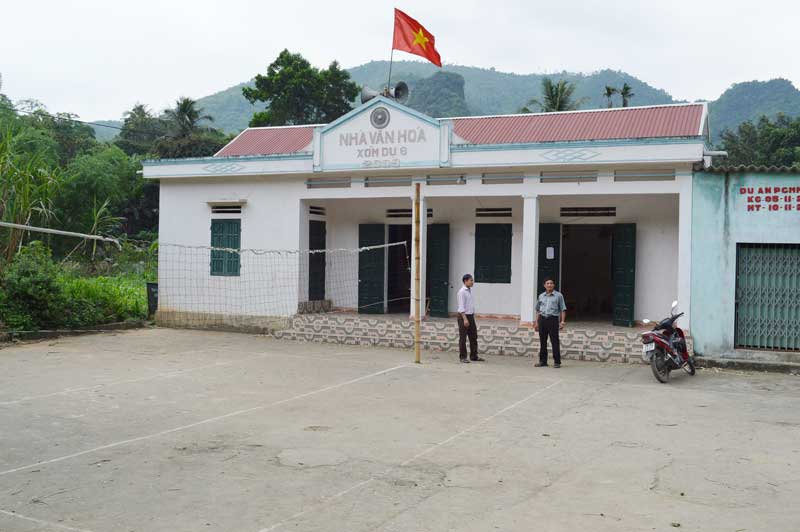


 Mong Hoa commune
(Hoa Binh city) has been paying attention to investing in building a system of
grassroots cultural institutions to meet the needs of living and meeting of the
local people.
Mong Hoa commune
(Hoa Binh city) has been paying attention to investing in building a system of
grassroots cultural institutions to meet the needs of living and meeting of the
local people.
The movement "All people unite to build a cultural life” has become an important solution to mobilize the People to promote the good traditions of the nation, repelling social evils, and helping each other develop economy, eradicating hunger and poverty, building a prosperous, equal, happy and progressive family, building the cultural villages, hamlets, residential and population groups, building the cultural agencies, units and enterprises. Since the movement was launched, it has created a spillover effect in the society, responded and voluntarily participated by all levels, branches and strata of the People. The movement was implemented through many specific and practical movements.
"All people unite to build a life in the residential areas” is the campaign strongly deployed towards the grassroots and the residential areas, with many activities of repaying somebody for his favor, humanitarian and charity such as: building and repairing the gratitude houses, giving the gratitude savings books, visiting and giving gifts, helping families under the preferential policies on holidays, New Year ...
The movement of building "The cultural villages, hamlets and residential groups” has had a positive impact on the improvement of socio-economic life, contributing to changing the face of rural and urban areas in the province. In 2000, there has been 343 out of the 1,577 "Cultural Village” in the whole province, reaching 21.75%. In 2010, there were 1,412 out of the 2,066 "Cultural villages”, reaching 68.3%. By 2019, in the whole province there were 1,264 out of the 1,482 "Cultural villages”, reaching 85.2%.
The movement of building the "Cultural family” is identified as an important content, bringing the decisive factor to the movement "All people unite to build a cultural life”. The quality of the movement has increasingly been improved according to the criteria and standards of the Central and the province.
Along with that, the leaders of agencies, units and enterprises has been annually coordinating with the Trade Union to organize the movement of "The Cultural agencies, units, enterprises” attaching to the political tasks so that the cadres, the civil servants, the public servants and employees can register for emulation. They have been promoting the movement of learning and following Ho Chi Minh's ideology, morality and style associated with the emulation movements such as "Excellent labor, creative labor”, "Being good at the domestic work, taking good care of the housework”, building the agency "Green, clean, beautiful”... In 2000, in the whole province there has been 227 out of the 459 "Cultural Offices, units, enterprises” accounting for 49.45%. In 2010 there were 1,069 out of 1,269 agencies, units and enterprises reaching this title, equaling 84.2%. By 2019, there were 1,443 out of 1,570 "The Cultural agencies, units, enterprises”, equaling 91.9%.